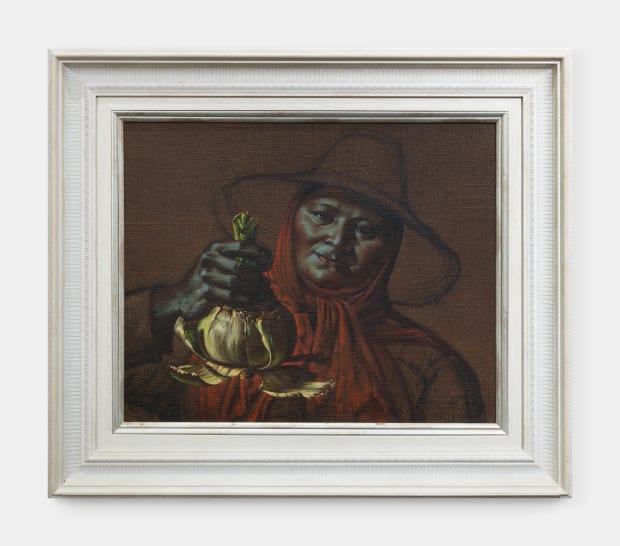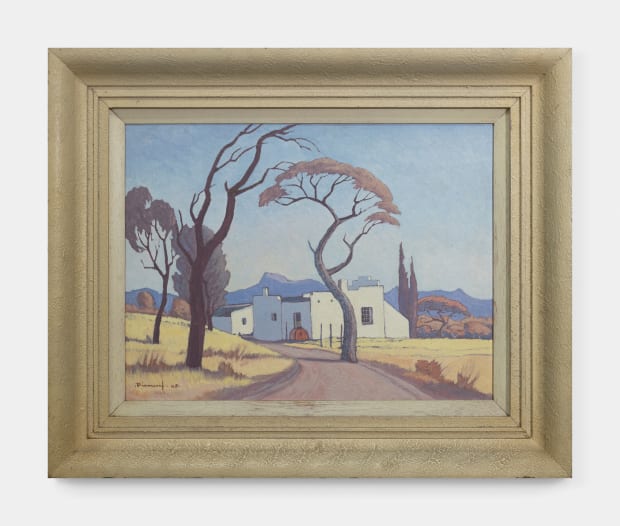

NEW ONLINE EXHIBITION
Dignity in Form: Maggie Laubser's Expressionist Vision
Selected portraits and landscapes, 1927-1973
This selection of works by Maggie Laubser (1886-1973) traces the breadth of her contribution to South African modernism, from the consolidation of her Expressionist idiom in the late 1920s to the lyrical distillations of her late career.
Bringing together portraits, landscapes, and drawings, the group demonstrates her persistent engagement with everyday subjects and the rhythms of rural life, while also revealing her synthesis of European Expressionist influences with the light, forms, and social realities of the Cape. Seen together, these works underscore Laubser's pivotal role in shaping a distinctly South African strand of modernism, one attentive to both formal innovation and human dignity.

FEATURED ARTWORK
Vladimir Tretchikoff
Herb Seller, 1950
A Portrait of Quiet Resistance
Painted four years after Vladimir Tretchikoff's arrival in Cape Town, Herb Seller (1950) is one of the artist's most poignant and culturally layered portraits. Far removed from the mass-market success of Chinese Girl, this early work honours a real figure: Mrs Wilhelmina Kleinsmidt, a Cape herbalist who sold traditional remedies on the Grand Parade.
Rendered in dramatic light and rich colour, with early hints of the turquoise tonality that would become his signature, this portrait offers more than aesthetic appeal. It is a deeply humanistic document of its time, produced in the year the apartheid government passed the Group Areas Act, a law that redefined land, belonging, and identity in South Africa.

FEATURED ONLINE EXHIBITION
Constructing Belonging: A selection of works by J.H. Pierneef, 1901-1948
Considering Identity and Landscape as jointly constructed through formal and ideological means
This exhibition brings together a focused selection of works by J.H. Pierneef (1886-1957), one of South Africa's most influential and contested modernists. Spanning five decades of artistic production, the collection explores how Pierneef constructed a vision of South Africa's landscape shaped by aesthetic order, ideological nostalgia, and formal innovation.
In the context of contemporary debates around land, heritage, and historical memory, Pierneef's images continue to demand engagement – not as fixed icons of Afrikaner nationalism, but as complex artefacts of modernism, shaped by and shaping the ideologies of their time.

This website uses cookies
This site uses cookies to help make it more useful to you. Please contact us to find out more about our Cookie Policy.